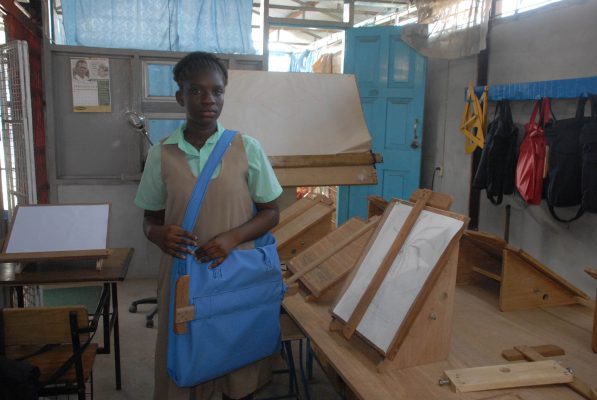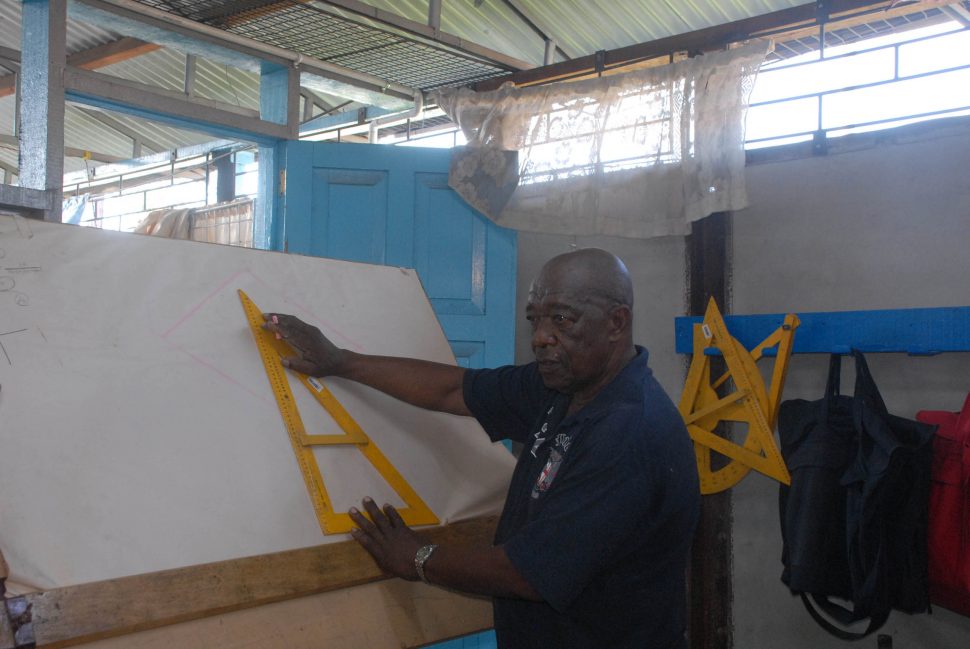Retired University of Guyana Engineering, Drawing and Design Lecturer, Andy Moore, who served for several years as one of the country’s more prominent Industrial Arts teachers has told Stabroek Business that given what would appear to be the trajectory of the country’s developmental focus, what he sees as a decline in the focus of Technical Drawing in the schools’ curriculum could come back to haunt us “in a big way” once we begin “what one imagines will be a major infrastructure development programme to go along with our wider ambitions as a nation.”
“It was an error to reduce the focus on Technical Drawing in the first place and what is important is that we restore the discipline to its rightful place with great haste. We are now in a situation where we need to take corrective action with great haste, In fact, many of the critical infrastructure requirements that will be required in an oil and gas economy will have to have their foundation in Technical Drawing-related skills,” Moore added.
And according to Moore, discourses on the development of the country’s education system “at the policy-making level” need to pay much closer attention to Technical and Vocational Education and Training (TVET) programmes “by creating the infrastructure and facilities necessary to create an enabling environment for effective teaching and learning of TVET subjects particularly technical drawing as a key to technological breakthrough.”

Asserting that there are “numerous studies” available to Guyana that address the roles of training and the acquisition and effective utilisation of skills that have to do with economic growth, Moore told Stabroek Business that it is high time the country’s education planners “wake up and smell the coffee.” The need for this shift regarding curriculum design has to do with the fact that the disciplines of science, technology and engineering “continue to make significant contributions in the areas of economic growth and the creation of modern amenities and services. Frankly, we must, for our sakes, depart from what over the years, has been a separation of much of what is thought in the classroom from the real world situation that has to do with national development,” Moore told Stabroek Business.
According to Moore it is not inconceivable that the absence of a firm grasp of the relevance of a subject like Technical Drawing “has to do with the fact that it never really benefits from a proper explanation regarding its sense of purpose in the wider scheme of things.” Asserting that many children, mostly boys, who did Technical Drawing at school some years ago did so purely because “it was a subject of the curriculum,” Moore said that as many students saw it, “there were limited places to go with a qualification of a proficiency” in Technical Drawing.
“The real truth is that Technical Drawing as a taught subject in schools has to be attended by a curriculum that addresses the broader spectrum of technical drawing. Since, for example, the construction-related subjects all have a dimension of technical drawing to them, then the subject [Technical Drawing] itself will have a direct relevance if it is taught alongside the other technical subjects. If it is offered in isolation then the issue of its broader vocational relevance becomes a problem,” he explained.
Expanding on the issue of relevance, the former lecturer said that Technical Drawing is “an absolutely essential form of technological and engineering communication in science, technology, industry and vocations.” Technical Drawing, he added, “makes it possible for engineers to create designs and calculate stresses in structures. In the absence of technical drawings the entire engineering field would have been one of constant risk and dangers resulting from guesswork.”
Moore, who holds Bachelor of Arts as well as Master of Arts degrees in Industrial Arts and Vocational Education respectively from the University of Alabama, told Stabroek Business that it was not necessary to “look too hard” at Guyana’s likely development trajectory to determine why we must accelerate the teaching and learning of Technical Drawing in our schools.
“A lot of what we will be doing in the period ahead will focus on the creation of structures…roads, bridges, factories, office blocks, hotels…and all of these will require us to have people, many people with skills and qualifications in Technical Drawing. When you balance that reality against what is happening in our schools, I would not say that we are in a comfortable place. It is important that we re-think the place that Technical Drawing has on the schools’ curriculum.”
And according to Moore, even as the need to infuse Technical Drawing into the schools’ curriculum in a ‘complete and comprehensive way” becomes more evident, so too do the challenges to the effective teaching of the subject rear their heads. “We have some serious constraints, not least a lack of qualified technical drawing teachers. This problem affects all of the TVET disciplines. We have to start training these people now since meaningful development cannot take place unless we make a serious effort to have specialised manpower in various areas.”
Meanwhile, he says he has “some issues” with the retention of the traditional methods of teaching since he observes, “science and technology is continually evolving and expanding as far as new discoveries and designs are concerned. It is pretty much the same with Technical Drawing which has been elevated from manual to computer-aided design. What this has meant is that the teaching and learning of technical drawing must also shift from the traditional method of teaching to contemporary teaching methods including the application of computer software.”
Moore says that he believes that the rising costs of adequate equipment and materials is probably also an inhibiting factor in the teaching of Technical Drawing. “I am particularly concerned about high costs in areas that one might describe as ‘consumable training materials’ including drawing boards, drawing equipment, computers, software, instructional drawings, internet facilities and textbooks which have become quite expensive.”









